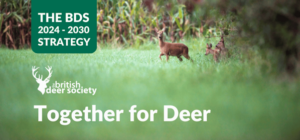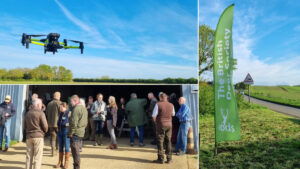ABOUT THE STUDY
Main applicant/Principal Investigator: Dr Sílvia Pérez-Espona (Anglia Ruskin University)
Collaborators: Dr Javier Pérez-Barbería (The James Hutton Institute)
This study aims to assess genetic diversity in the Major Histocompatibility Complex (MHC) in forest and open hill populations of Scottish red deer (Cervus elaphus). The proposed project consisted on genotyping the MHC class II DRB3 exon 2 a total of 48 individuals from two forest (Tarlogie, Inshriach) and two open hill (Strathconon, Abernethy) Scottish red deer populations; 12 individuals from each population (6 stags, 6 hinds). For each individual a total of 48 clones, resulting from the amplification and cloning of the MHC class II DRB3 exon 2, were to be sequenced. This experiment would result in a total of 2,304 MHC sequences (48 sequences per individual) that will allow establishing the minimum number of clones per individual that need to be screened to capture the complete MHC allelic diversity in an individual red deer.
Progress:
Laboratory analysis
The project is progressing satisfactorily with the 24 red deer stags sampled from the four selected populations already analysed (MHC class II DRB3 amplified, cloned and sequenced). For the 24 red deer hinds, the MHC class II DRB3 has already been amplified, all PCR products cloned and currently preparing the samples to be sequenced. The completion of the sequencing is expected to be by the end of February/beginning of March 2015.
Preliminary results
Results from the sequencing of the 24 red deer stags has revealed that genetic diversity at the MHC is high, with the highest number of alleles ever discovered in an ungulate (some individuals presented > 30 alleles). This reflects the importance of conducting thorough analyses, such as the one conducted here, if we are to accurately assess genetic diversity at the MHC. Genetic diversity was high in both forest and open hill populations. Although more detailed data analyses need to be conducted when the hind data is available, the data indicates that some set of alleles are habitat-specific (i.e. only found in either forest or open hill).
Plan of action for year 2
Finalise the sequencing of MHC alleles of 24 red deer hinds (end of February/March 2015).
Data analyses of MHC data (April 2015).
Publication of MHC data (summer 2015).
Article in Deer Magazine (autumn 2015)
FURTHER READING

Plastic Pollution Threatens Deer
This article highlights the dire impact of plastic waste on wild deer globally. It urges immediate action through public education, and responsible waste management to protect deer habitats and minimise their exposure to harmful debris. The article also underscores the lesser-known danger of roadside litter to deer, emphasising the need for awareness and collective efforts to safeguard wildlife and our environment.

Together for Deer – New BDS Strategy Launched
We unveiled our new strategy, “Together for Deer,”. The strategy emphasises evidence-based approaches and collaboration among stakeholders. It focuses on Ethics & Welfare, Education & Training, and Science & Research, aiming to establish BDS as a leading authority in deer welfare and management by 2030. “Together for Deer” aims to unite efforts in safeguarding deer welfare amid complex challenges.

BDS Launches First Drone Survey Thanks to Supportive Members
We are thrilled to announce a groundbreaking moment for the BDS community: the successful launch of our first drone survey funded by last year’s award-winning Big Give campaign. This achievement has been made possible through the unwavering support and contributions of our dedicated members and supporters.










